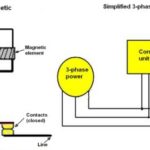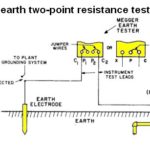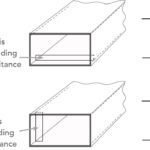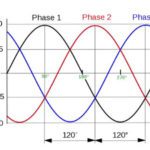Most concerns about test instrumentation center on making accurate measurements. Engineers tend to take the underlying electrical infrastructure for granted. But it can be reassuring to know the lab electronics plug into an electrical system that is up to the task.
Above all, any electrical installation must comply with the current electrical code, and an existing installation must be in compliance with the code having jurisdiction at the time of construction. In the U.S., most jurisdictions recognize The National Electrical Code (NEC), which is also applicable in Mexico, Costa Rica, Venezuela and Columbia. In Canada, the Canadian Electrical Code (CEC) is enforced. In most respects, it resembles the NEC.
Other countries use IEC 60364 as the basis for their national regulations. These codes contain minimum standards. In planning an electrical shop or lab, there are good reasons for exceeding these mandates. The NEC is revised every three years, but existing installations aren’t expected to be upgraded to comply with new editions.

In a large manufacturing building, it is common to have one or more transformer rooms. Higher voltage service conductors or feeders rout to these rooms, which also contain large electrical panels from which branch circuits originate. Here’s the problem: If one of these load centers happens to be electrically near your lab — for example just on the other side of a partition — it is quite possible that the branch circuit serving your shop could be only a few feet long. Even if the conductor is only 12 AWG, the circuit impedance could be quite low. Then a short circuit caused by a nicked wire or faulty load could go off like a cannon next to you, with a potential for hazardous arc blast. Moreover, bypassing the branch-circuit over-current protection, the much higher rated feeder breaker could trip because it is faster acting, cutting the power to part of the building.
It is possible to put a current-limiting device at the origin of your branch circuit, but a more practical solution could be to wire your whole shop or lab from a more remote transformer room. In a new installation, one of the planning mandates could be to locate the shop or lab some distance from the nearest transformer room.
Along these same lines (your electrician may disagree), it may be a good idea to bring a 14 AWG branch circuit to your bench, labeled for general use, so any short created will produce a less ferocious arc blast. We’ll have more to say on wiring the work area, but first some more observations on the overall installation.
Electrical lab workers do a lot of bench work involving testing, component substitution, breadboarding and the like. But at times, heavier mechanical work and metal fabrication are required. In this regard, any grinding, drilling, welding and similar operations should take place in a separate room. Grindings and metal particles, especially in the form of airborne conductive dust, are incompatible with open electrical enclosures, exposed PCBs and ICs with close leads. A small metal chip bridging two adjacent circuit board traces or component leads can cause havoc.
The NEC prohibits use of Romex (Type NM) in shops and labs, used to good effect in low-rise residential occupancies. Electricians speak of “putting the wire in conduit” in referring to Type EMT (electrical metallic tubing), but it is technically not a conduit. Regardless, it is the raceway to use, as opposed to Type RMC (rigid metal conduit), found in hazardous locations because it is relatively explosion-proof. RMC is much more expensive and labor-intensive because each piece must be cut and threaded at the site. EMT just slides together and fastens with set screws or in wet areas, compression fittings.
As for receptacles, specific spacings are mandated in residential settings, but in a shop or lab there is no such requirement. They are installed where needed. At the bench, a row of closely-spaced quads in surface-mounted 4X4 metal boxes connected by metal raceway makes a good installation. There is no requirement that they be GFCI-protected, but that might be a good idea if you don’t mind unexpected tripping.
Another good idea might be to have every other receptacle so protected. Some circuits could be 15 A and others 20 A, all labeled. All receptacles must have intact equipment grounds bonded back to the electrical service. Extra ground rods are permitted, but they must be bonded to the system ground, not floating. However, you shouldn’t think you are doing a great thing. The critical idea is bonding, not grounding. Parking lot light fixture manufacturers frequently specify a separate ground rod at each pole. This shows ignorance of the basic circuitry and purpose of grounding.
The example of what can happen during a lightning strike illustrates why multiple ground rods can be counterproductive. A lightning strike can contain up to about a billion volts of potential, and the potential of the earth near the strike can be nearly that. But the potential falls off rapidly with distance from the strike, and that has implications for ground rods sitting nearby.
Suppose lightning strikes close to a facility “protected” with two ground rods. It’s likely that one rod is closer to the strike than the other. Earth near the strike can have a potential measured in the thousands of volts. Because the potential falls off rapidly, earth that is 20 ft farther away from the strike could be at a potential thousands of volts below that of earth at a closer radius.
Note, however, that the potential difference between the two spots could still be in the range of thousands of volts. Consequently, ground rods sitting at the two distances will also see a potential difference of thousands of volts between them. The kilovolt-level potential difference could cause a current flow — and a big current flow at that — between the two rods and anything in the path between them.
Flooring in an industrial facility is usually concrete, which should be regarded as a conductive path to ground. In the bench area, a thick, dry rubber mat is beneficial. The bench surface should be a non-conductive material so that an energized printed circuit board can be placed on it. You’ll need a recessed grounding port so that the grounding bracelet, tethered to a phone plug, can be hooked up.
Finally, don’t forget the fire extinguisher, and unit emergency lighting with rechargeable batteries so that it kicks in immediately while the emergency generator is getting up to speed. This may come in handy if lightning strikes and you’re lab has two ground rods.





Leave a Reply
You must be logged in to post a comment.